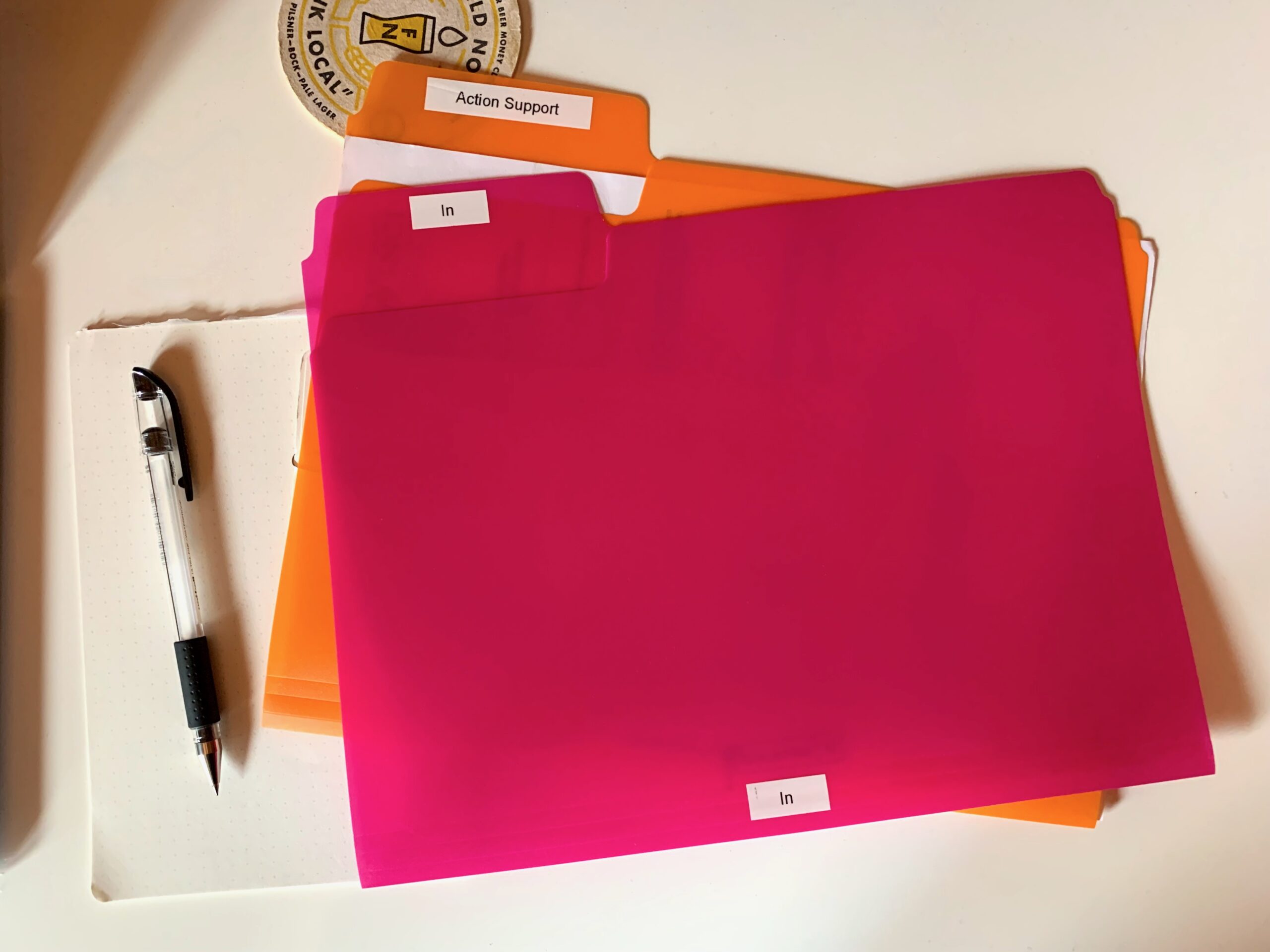I’m using GTD for almost ten years now. I consider myself an advanced user, but I want to simplify my system, my tools and return to the basics to get better at the end. I started refactoring every aspect of my GTD system—digital and analog as well. This is a series about how I did it and why.
- Part 1: list managers are overcomplicating our systems
- Part 2: the Capture Wallet
- Part 3: keeping capture tools everywhere
- Part 4: using Apple Watch as a safety net for capturing
- Refactoring my GTD system – part 5: the Mobile inbox
Paper is still with us, and we have to be prepared to keep it somewhere temporarily until we process it. GTD says that we have to keep a physical inbox at home and the office, but what about those times when I’m on the road?
The best way to manage incoming, paper-based material when away from my inbox is to keep a folder in my bag: it is my mobile inbox where I can collect stuff when I’m out for multiple days or going to a meeting where I expect to receive papers. I can park notes from my Capture Wallet, contracts, quotes, reference documents, invoices, contact cards, etc.

Following David Allen’s advice, my mobile inbox is a plastic manila folder. I use a plastic one because it’s more durable—a paper folder would quickly fall apart in my bag. I like the manila style because it’s easy to throw stuff into it, which is one of its disadvantages too: I have to be a bit more careful when I lift it because things can slip out.
For some reason, manila folders are not very popular in Europe. I couldn’t find plastic ones in A4 size, so I had to order a couple of them from Amazon. Smead is a US-based company that makes excellent quality manila folders, although these are letter-sized ones. In my opinion, the difference between letter size and A4 is negligible for a folder that I use to hold papers temporarily.

It is vital to treat the mobile inbox the same way as I do my other inboxes. When I arrive back at my desk, I unload the contents of my mobile inbox into my physical one for later processing. When I’m on the road, the folder is my physical inbox, so I process stuff directly from it.